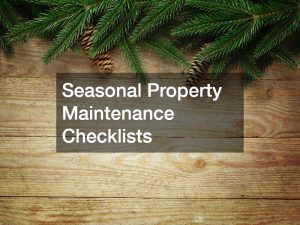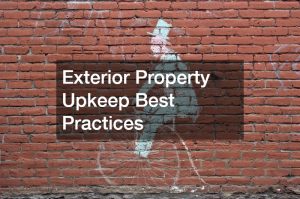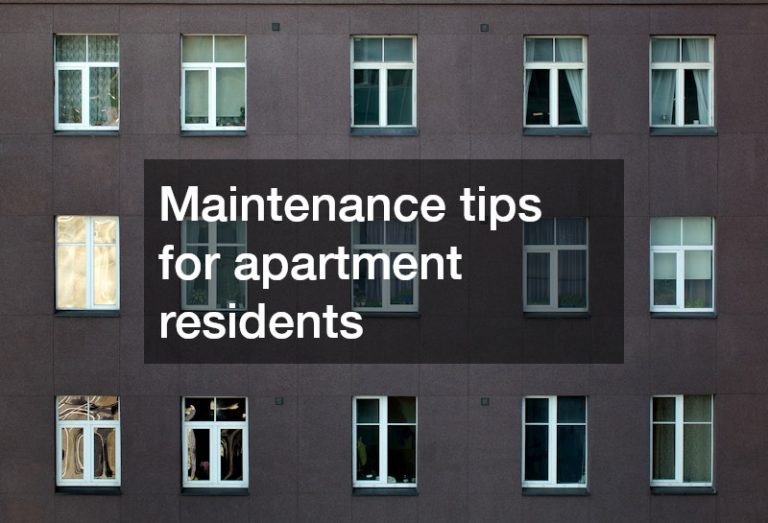Best Practices for Property Upkeep: Essential Tips for Maintaining Value
Introduction
Regular property upkeep is essential for preserving and increasing the value of your home. A proactive maintenance approach not only saves you money in the long run but also ensures your living space remains safe and comfortable. Developing a routine property maintenance plan allows homeowners to address small issues before they become costly repairs.
Homeowners often overlook the fact that a well-maintained home creates a welcoming environment and enhances curb appeal. Real estate experts suggest that homes with regular upkeep tend to sell faster and at better prices compared to those neglected over time. By investing in property upkeep, you can protect your most significant investment—your home.
This article provides essential tips for maintaining your property’s value through regular maintenance and thorough inspections. By following these best practices, you can ensure your home remains in peak condition, reducing the need for expensive repairs and improving your property’s overall health. Let’s dive into the importance of property upkeep and the steps needed to maintain your home.
1. The Importance of Property Upkeep for Maintaining Home Value
Consistent property upkeep is fundamental to maintaining and even increasing home value. Regular maintenance tasks like cleaning, inspections, and small repairs directly impact the overall appearance and health of a home. When homeowners prioritize these tasks, it helps prevent minor issues from escalating into major problems, preserving the home’s structural integrity.
Neglecting small maintenance tasks can lead to costly repairs that could have been avoided. For example, a simple leak in the roof, if left unchecked, can result in significant water damage, requiring extensive repairs. Likewise, failing to maintain the HVAC system can result in higher energy bills and may necessitate a costly replacement sooner than expected.
Protecting property value through regular upkeep is crucial in real estate. Homes that are well-maintained are more attractive to potential buyers and often sell faster and at higher prices. Real estate trends show that homes with good curb appeal and up-to-date maintenance records significantly outperform those without, emphasizing the importance of proactive care.
2. Seasonal Property Maintenance Checklists

Spring and summer are ideal times for thorough property maintenance tasks both indoors and outdoors. Outdoor care includes cleaning gutters, inspecting the roof, power washing exterior surfaces, and tending to the lawn and garden. Ensuring that these areas are well-maintained sets the stage for a vibrant and welcoming home environment.
Indoor maintenance during these seasons involves checking HVAC systems, cleaning air filters, and inspecting plumbing for leaks. These tasks not only enhance efficiency but also help prevent costly repairs down the line. By attending to both indoor and outdoor areas, homeowners can prepare their property for the growing season and maintain its value.
Fall and winter maintenance focuses on preparing the home for colder weather. Outdoor tasks include cleaning chimneys, inspecting insulation, and draining outdoor faucets. Indoor care involves ensuring heating systems are serviced, checking for drafts around windows and doors, and testing smoke and carbon monoxide detectors. These seasonal checklists ensure that the home remains safe, energy-efficient, and well-protected against the elements.
3. Key Areas to Focus on for Effective Property Upkeep
Regular roof inspections are a vital part of property upkeep. Homeowners should check for missing shingles, cracks, and leaks to prevent significant water damage. Addressing these issues early through minor repairs can save substantial costs and protect the home’s structural integrity.
Maintaining the plumbing system is another critical area. Checking for leaks, monitoring water pressure, and keeping an eye on water bills for unusual spikes can help identify issues early. Annual inspections and flushing of the water heater to remove sediment buildup are also recommended to ensure efficient operation and prevent unexpected failures.
Proper care of the HVAC system is essential for energy efficiency and comfort. Changing air filters every 1-3 months ensures that the system runs efficiently, while regular duct cleaning and inspections can extend its lifespan. These maintenance tasks not only improve energy efficiency but also enhance indoor air quality and overall home comfort.
4. Exterior Property Upkeep Best Practices

Landscaping and lawn care play a significant role in maintaining property value. Regular lawn mowing, trimming overgrown trees, and ensuring garden beds are well-kept contribute to enhanced curb appeal. Homeowners should consider seasonal planting and mulching to keep their outdoor spaces attractive year-round.
Deck and patio maintenance is also crucial for preserving exterior spaces. Power washing, staining, and sealing wood decks can prevent weather damage and prolong their lifespan. Regular cleaning and sealing of patios help maintain their aesthetic appeal and structural integrity, ensuring these areas remain functional and inviting.
These exterior maintenance tasks are just as important as indoor upkeep in property upkeep. A well-maintained exterior complements the home’s overall appearance and safeguards against potential damage. By investing time and effort into these areas, homeowners can significantly protect their property value and enhance their outdoor living experience.
5. Interior Property Upkeep Best Practices
Keeping the kitchen and bathroom in excellent condition is essential for maintaining property value. Regularly cleaning and inspecting appliances like dishwashers and refrigerators will ensure they run efficiently and last longer. Maintaining grout in showers and caulking around sinks helps prevent mold and water damage, preserving these vital areas of the home.
Flooring care is another critical aspect of interior maintenance. Proper cleaning, polishing, and protecting hardwood floors from scratches keep them looking their best. Carpet cleaning techniques, such as regular vacuuming and addressing stains promptly, can extend the lifespan of carpets and maintain their appearance.
Window and door maintenance should not be overlooked. Resealing windows and doors prevents drafts, reducing energy bills and preventing moisture buildup. Regular checks on locks and door and window hinges, along with oiling them as needed, can prevent wear and tear, ensuring these entry points remain functional and secure.
6. Proactive Property Inspections and Professional Help
Regular property inspections are crucial for identifying potential issues before they escalate. Homeowners can use self-inspection checklists focusing on key areas like plumbing, electrical systems, and the foundation to ensure nothing is overlooked. This proactive approach to maintenance can help save money and prevent unexpected problems.
While self-inspections are valuable, professional inspections should not be neglected. Scheduling inspections by roofers, electricians, or plumbers every 1-3 years ensures that the property remains in excellent condition. These professionals can identify and address issues that may not be apparent to untrained eyes, providing peace of mind.
Knowing when to hire a professional versus performing DIY repairs is essential. Homeowners should engage licensed contractors for complex tasks like electrical work, HVAC repairs, or significant structural issues. This approach ensures work is done correctly and safely, safeguarding the home’s long-term value.
7. Sustainable Property Upkeep Practices
Upgrading to energy-efficient appliances is a practical step towards sustainable property upkeep. Replacing old appliances with models that have higher energy efficiency ratings reduces utility bills and improves home value. These upgrades also positively impact the environment by reducing energy consumption.
Improving insulation and upgrading to energy-efficient windows enhance home sustainability. Proper insulation and modern windows help maintain a comfortable indoor temperature, reducing the need for excessive heating and cooling. These improvements can significantly lower energy costs and increase property appeal.
Eco-friendly lawn and garden care contributes to a sustainable home environment. Xeriscaping, using drought-resistant plants, and composting are excellent ways to reduce environmental impact. Additionally, employing water conservation techniques like rain barrels and drip irrigation systems keeps gardens vibrant while conserving water.
8. The Role of Property Upkeep in Rental and Investment Properties
Landlords and property managers must prioritize regular maintenance to prevent tenant complaints and maintain property value. Routine checks and prompt repairs create a positive living environment, leading to tenant satisfaction and longer occupancy rates. A well-maintained property also minimizes legal and financial risks associated with neglect.
Proactive maintenance of rental or investment properties prevents costly repairs. Addressing small issues before they become significant problems protects the property’s structural integrity and aesthetic appeal. This approach also helps retain tenant satisfaction, reduce vacancy rates, and ensure a steady income stream.
For tenants, practical advice on property upkeep can enhance their living experience. A resource such as the cluster keyword “Maintenance Tips for Apartment Residents” (insert link) offers valuable tips for maintaining their living spaces. This collaborative effort between landlords, property managers, and tenants ensures that the property remains in excellent condition and retains its value.
Conclusion
In summary, regular property upkeep is paramount for maintaining and increasing home value. By focusing on both interior and exterior maintenance, homeowners can ensure their property remains in top condition. Proactive inspections and seasonal checklists further contribute to a well-maintained home, preventing costly repairs.
Homeowners are encouraged to stay proactive with their property’s maintenance. Seasonal tasks, regular inspections, and seeking professional help when needed are all crucial components of a robust property upkeep plan. These efforts protect the homeowners’ investment and provide a safe and comfortable living environment.
We invite you to explore more detailed advice on specific maintenance areas and to implement a routine upkeep schedule for your property. With consistent care and attention, you can enjoy the benefits of a well-maintained home for years to come. Start today and see the positive impact on your property’s value and overall condition.


